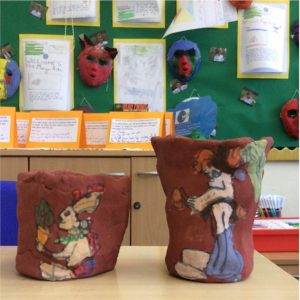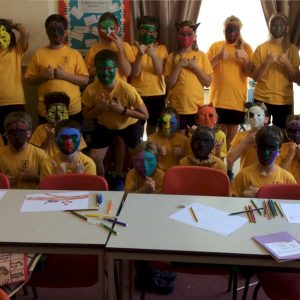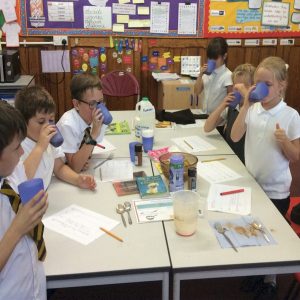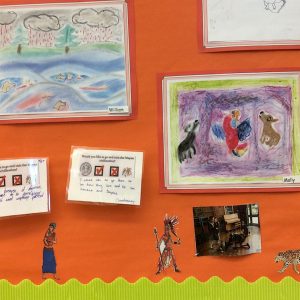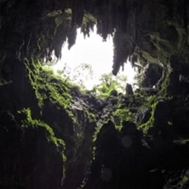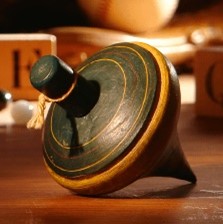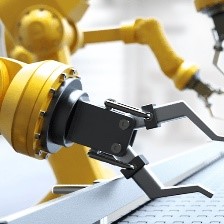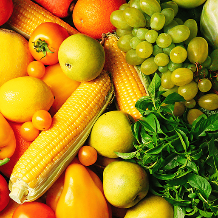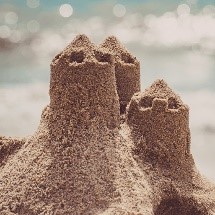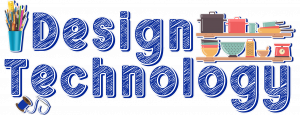
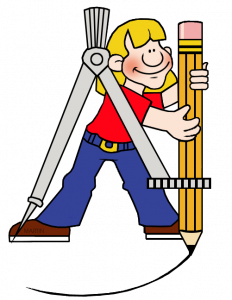
At Sandhurst Primary School we are delighted to have the facilities to offer a fully comprehensive Design Technology curriculum to provide maximum enjoyment in a wide variety of lessons.
Our curriculum provides a huge variety of challenging opportunities that ensure full coverage of the National Curriculum. Furthermore, we intend to enhance the learning experiences further by offering rich and hands on practical experiences. We are mindful that these experiences may be entirely new for some of our children therefore we endeavour to create a supportive and guided learning environment where appropriate.
Children are taught the key skills that are essential to the design process: designing, planning, making and evaluating. Within each year group children have practical opportunities to master each skill throughout the project. Furthermore, children will be taught the knowledge of how to create and improve their designs, with opportunities to reflect on the process and make improvements. We strive to create classroom environments that encourage kindness. Often our projects our require collaborative work which promote listening to each other, engaging in discussions, space for open dialogue and promoting peer collaboration. Thereby, further enhancing our school values of enjoyment and kindness.
We are delighted to have the facilities to offer food technology, which is based around our Cornerstones Curriculum. We have invested time and resources to developing this part of our DT to ensure children have the greatest opportunities to learn about a balanced diet, preparing ingredients, food safety and hygiene, and preparing and cooking basic recipes. This is inclusive to both Key Stage 1 and 2.

At Sandhurst Primary, Art and Design is taught through carefully selected topics as outlined below. The choice of topic ensures full coverage of the national curriculum with ample opportunities for pupils to learn about artist from a wide array of geographical and historical backgrounds. We have several highly skilled members of staff who can provide quality teaching of art and design. They provide support across the whole school to ensure teaching of Art and Design is delivered to the very best standard. This expectation is transferred from teacher to pupil as children are taught to take care and to feel proud of their artwork.
Year 1
| Year 1 | ||
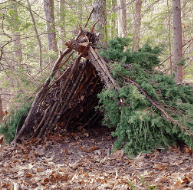 Shade and Shelter Shade and Shelter
This project teaches children about the purpose of shelters and their materials. They name and describe shelters and design and make shelter prototypes. Children then design and build a play den as a group and evaluate their completed product. |
 Taxi! Taxi!
This project teaches children about wheels, axles and chassis and how they work together to make a vehicle move. |
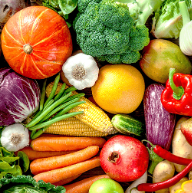 Chop, Slice and Mash Chop, Slice and Mash
This project teaches children about sources of food and the preparatory skills of peeling, tearing, slicing, chopping, mashing and grating. They use this knowledge and techniques to design and make a supermarket sandwich according to specific design criteria. |
Year 2
| Year 2 | |||
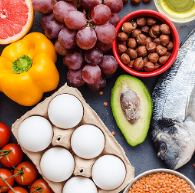 Remarkable recipes Remarkable recipes
This project teaches children about sources of food and tools used for food preparation. They also discover why some foods are cooked and learn to read a simple recipe. The children choose and make a new school meal that fulfils specific design criteria. |
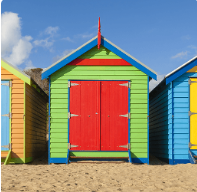 Beach Huts This project teaches children about making and strengthening structures, including different ways of joining materials. |
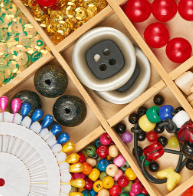 Cut, Stitch and Join This project teaches children about fabric home products and the significant British brand Cath Kidston. They learn about sewing patterns and using a running stitch and embellishments before making a sewn bag tag. |
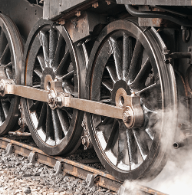 Push and Pull This project teaches children about three types of mechanism: sliders, levers and linkages. They make models of each mechanism before designing and making a greetings card with a moving part. |
Year 3
| Year 3 | |||
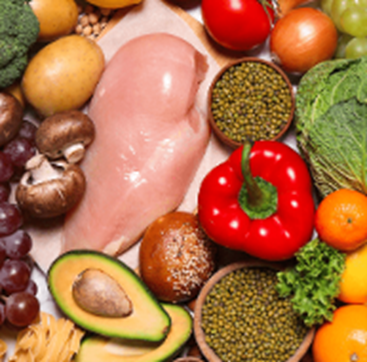 Cook Well, Eat Well This project teaches children about food groups and the Eatwell guide. They learn about methods of cooking and explore these by cooking potatoes and ratatouille. The children choose and make a taco filling according to specific design criteria. |
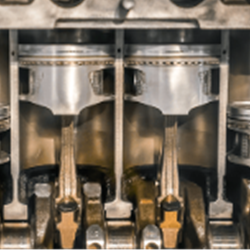 Making it Move This project teaches children about cam mechanisms. They experiment with different shaped cams before designing, making and evaluating a child's automaton toy. |
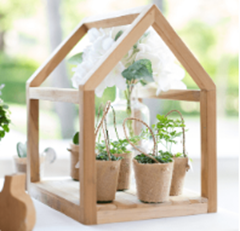 Greenhouses This project teaches children about the purpose, structure and design features of greenhouses, and compares the work of two significant greenhouse designers. They learn techniques to strengthen structures and use tools safely. They use their learning to design and construct a mini greenhouse. |
|
Year 4
| Year 4 | ||
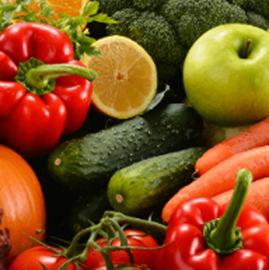
Fresh Food, Good Food This project teaches children about food decay and preservation. They discover key inventions in food preservation and packaging, then make examples. The children prepare, package and evaluate a healthy snack. |
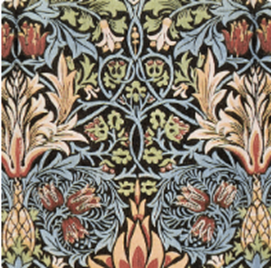
Functional and Fancy Fabrics This project teaches children about home furnishings and the significant designer William Morris. They learn techniques for decorating fabric, including block printing, hemming and embroidery and use them to design and make a fabric sample. |
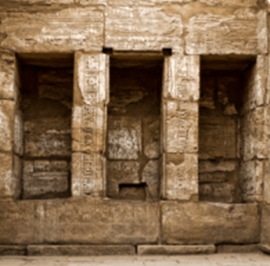
Tomb Builders This project teaches children about simple machines, including wheels, axles, inclined planes, pulleys and levers, exploring how they helped ancient builders to lift and move heavy loads. |
Year 5
| Year 5 | ||
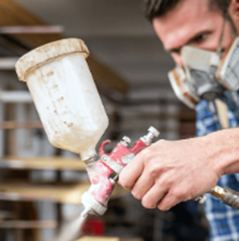
Moving Mechanisms This project teaches children about pneumatic systems. They experiment with pneumatics before designing, making and evaluating a pneumatic machine that performs a useful function. |
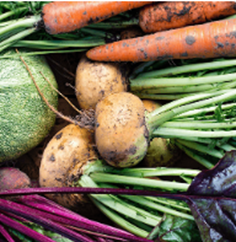
Eat the Seasons This project teaches children about the meaning and benefits of seasonal eating, including food preparation and cooking techniques. |
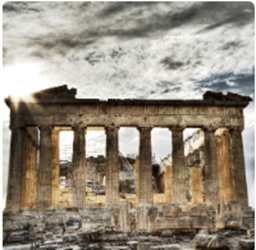
Architecture This project teaches children about how architectural style and technology has developed over time and then use this knowledge to design a building with specific features. |
Year 6
| Year 6 | ||
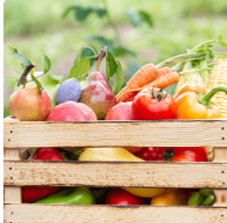 Food For Life Food For Life
This project teaches children about processed food and healthy food choices. They make bread and pasta sauces and learn about the benefits of whole foods. They plan and make meals as part of a healthy daily menu, and evaluate their completed products. |
 Engineer Engineer
This project teaches children about remarkable engineers and significant bridges, learning to identify features, such as beams, arches and trusses. They complete a bridge-building engineering challenge to create a bridge prototype. |
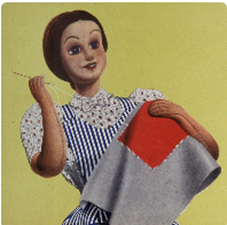 Make Do and Mend Make Do and Mend
This project teaches children a range of simple sewing stitches, including ways of recycling and repurposing old clothes and materials. |
Our curriculum pedagogy is based on four distinct stages (known as the Four Cornerstones) which aim to give clear direction – through a carefully sequenced, interconnected and knowledge-rich planning sequence – for both teaching and learning:
Engage – Develop – Innovate - Express
- Engage in memorable experiences that stimulate children’s curiosity, leading them to ask questions and talk about their prior learning.
- Develop new skills and knowledge by delving deeply into a theme, where children make links, create, explore, make, read and write.
- Innovate by returning to prior knowledge and skills so that children can use and apply these in new contexts (in and out of school).
- Express what has been learned by providing opportunities for children to reflect, test their knowledge and celebrate their achievements.
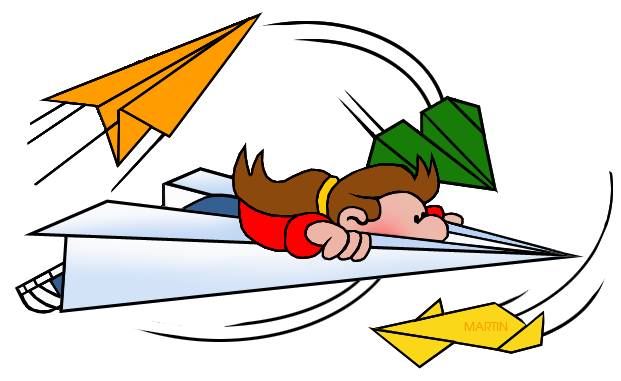
Following our Cornerstones Curriculum, we use quality-assured lesson resources, knowledge organisers, practical resources and vocabulary to further support children’s developing artistic subject knowledge. The resources contain the essential knowledge and skills that children need for each art and design topic.
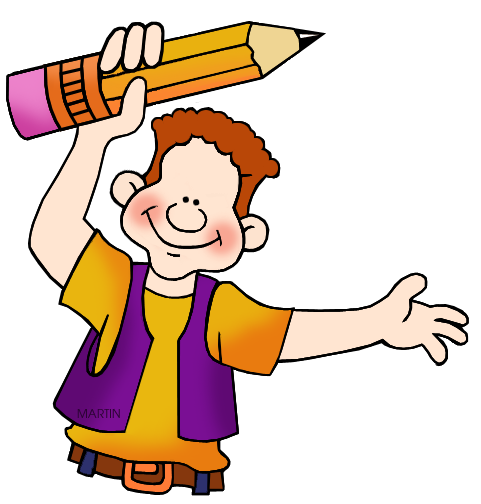
Throughout their time spent at Sandhurst Primary School, children will build year on year, their art knowledge and skills. Through a carefully structured curriculum, children will have opportunities to learn new skills and revisit previously taught ones. Teachers will make judgement upon children’s understanding through sketch book recordings, teacher observations, final pieces and classroom dialogue are used to assess the children’s understanding. Our weekly art and design lessons provide children with a relaxing, creative outlet to express their ideas whilst learning to enhance their skillset.
Possible Career Aspirations for the Future
We want our pupils to develop a love for art and as a result remind them, if they continue to aim high they could become an Architect, Fashion designer, Advertising director, Aeronautical engineer, Web developer, Video games designer, Interior designer, Graphic designer, Carpenter or choose from many other exciting professions!

Cornerstones Curriculum
We provide a creative curriculum based around the Cornerstones Curriculum, a nationally recognised approach for delivering outstanding learning opportunities for children.
What is the Cornerstones Curriculum?
The Cornerstones Curriculum is a creative and thematic approach to learning that is mapped to the Primary National Curriculum to ensure comprehensive coverage of national expectations. Our new curriculum will be delivered through Imaginative Learning Projects (ILPs) which will provide a rich menu of exciting and motivating learning activities that make creative links between all aspects of our children’s learning.
We believe children learn better when they are encouraged to use their imagination and apply their learning to engaging contexts. Our new curriculum will provide lots of learning challenges throughout the academic year that will require children to solve problems, apply themselves creatively and express their knowledge and understanding effectively across the curriculum.
Cornerstones also provide a rigorous essential skills framework that outlines the end of year expectations in all subjects. These essential skills are tied to activities and are age related so that staff can track children’s progress and identify their individual learning needs.
How it Works?
Children will progress through four stages of learning in each ILP – Engage, Develop, Innovate and Express. To find out more about these stages please click on the link through to Cornerstones website:
https://cornerstoneseducation.co.uk/why-cornerstones/
Please find downloadable PDF versions of the Information available for the Design and Technology Curriculum.
Big Idea : Processes
| Reception | Year 1 | Year 2 | Year 3 | Year 4 | Year 5 | Year 6 |
| Processes | ||||||
| Mechanisms and movement | ||||||
| Vehicles and machines have wheels and axles to help them move. Explore, build and play with a range of resources and construction kits with wheels and axles. | An axle is a rod or spindle that passes through the centre of a wheel to connect two wheels. Use wheels and axles to make a simple moving model. | A mechanism is a device that takes one type of motion or force and produces a different one. A mechanism makes a job easier to do. Mechanisms include sliders, levers, linkages, gears, pulleys and cams. Use a range of mechanisms (levers, sliders, wheels and axles) in models or products. | Levers consist of a rigid bar that rotates around a fixed point, called a fulcrum. They reduce the amount of work needed to lift a heavy object. Sliders move from side to side or up and down, and are often used to make moving parts in books. Axles are shafts on which wheels can rotate to make a moving vehicle. Cams are devices that can convert circular motion into up-and-down motion. Explore and use a range of mechanisms (levers, sliders, axles, wheels and cams) in models or products. | Mechanisms can be used to add functionality to a model. For example, sliders or levers can be used in moving pictures, storybooks or simple puppets; linkages in moving vehicles or puppets; gears in motorised vehicles or spinning toys; pulleys in cable cars or transport systems and cams in 3-D moving toys or pictures. Explore and use a range of mechanisms (levers, axles, cams, gears and pulleys) in models or products. | Pneumatic systems use energy that is stored in compressed air to do work, such as inflating a balloon to open a model monster's mouth. These effects can be achieved using syringes and plastic tubing. Use mechanical systems in their products, such as pneumatics. | Mechanical systems can include sliders, levers, linkages, gears, pulleys and cams. Other mechanisms include pneumatics and hydraulics. Explain and use mechanical systems in their products to meet a design brief. |
| Electricity | ||||||
| Many appliances at home and school need electricity to work. The appliances need to be attached to electricity through a plug and socket, or use batteries. Identify products that use electricity to make them work. | Electricity is a form of energy. Many household appliances use electricity, such as kettles, televisions and washing machines. They can be switched on by completing the circuit to allow the flow of electricity or off by breaking the circuit to prevent electricity from flowing. This can be a switch on the appliance or a wall socket switch. Identify products that use electricity to make them work and describe how to switch them on and off. | A series circuit is made up of an energy source, such as a battery or cell, wires and a bulb. The circuit must be complete for the electricity to flow. Create an operational, simple series circuit. | An electric circuit can be used in a model, such as a lighthouse. It can be controlled using a switch. Incorporate a simple series circuit into a model. | Components can be added to circuits to achieve a particular goal. These include bulbs for lighthouses and torches, buzzers for burglar alarms and electronic games, motors for fairground rides and motorised vehicles and switches for lights and televisions. Incorporate circuits that use a variety of components into models or products. | Electrical circuits can be controlled by a simple on/off switch, or by a variable resistor that can adjust the size of the current in the circuit. Real-life examples are a dimmer switch for lights or volume control on a stereo. Use electrical circuits of increasing complexity in their models or products, showing an understanding of control. | Computer programs can control electrical circuits that include a variety of components, such as switches, lamps, buzzers and motors. Understand and use electrical circuits that incorporate a variety of components (switches, lamps, buzzers and motors) and use programming to control their products. |
Big Idea : Creativity
| Reception | Year 1 | Year 2 | Year 3 | Year 4 | Year 5 | Year 6 |
| Creativity | ||||||
| Generation of ideas | ||||||
|
Create collaboratively, share ideas and use a variety of resources to make products inspired by existing products, stories or their own ideas, interests or experiences. |
Design criteria are the explicit goals that a project must achieve. Create a design to meet simple design criteria. | Ideas can be communicated in a variety of ways, including written work, drawings and diagrams, modelling, speaking and using information and communication technology. Generate and communicate their ideas through a range of different methods. | Design criteria are the exact goals a project must achieve to be successful. These criteria might include the product's use, appearance, cost and target user. Develop design criteria to inform a design. | Annotated sketches and exploded diagrams show specific parts of a design, highlight sections or show functions. They communicate ideas in a visual, detailed way. Use annotated sketches and exploded diagrams to test and communicate their ideas. | A pattern piece is a drawing or shape used to guide how to make something. There are many different computer-aided design packages for designing products. Use pattern pieces and computer-aided design packages to design a product. | Design criteria should cover the intended use of the product, age range targeted and final appearance. Ideas can be communicated in a range of ways, including through discussion, annotated sketches, cross-sectional and exploded diagrams, prototypes, pattern pieces and computer-aided design. Develop design criteria for a functional and appealing product that is fit for purpose, communicating ideas clearly in a range of ways. |
| Structures | ||||||
| Different materials have different properties and can be used for different purposes. Construct simple structures and models using a range of materials. | Different materials can be used for different purposes, depending on their properties. For example, cardboard is a stronger building material than paper. Plastic is light and can float. Clay is heavy and will sink. Construct simple structures, models or other products using a range of materials. | Structures can be made stronger, stiffer and more stable by using cardboard rather than paper and triangular shapes rather than squares. A broader base will also make a structure more stable. Explore how a structure can be made stronger, stiffer and more stable. | Shell structures are hollow, 3-D structures with a thin outer covering, such as a box. Frame structures are made from thin, rigid components, such as a tent frame. The rigid frame gives the structure shape and support. Diagonal struts can strengthen the structure. Create shell or frame structures using diagonal struts to strengthen them. | A prototype is a mock-up of a design that will look like the finished product but may not be full size or made of the same materials. Shell and frame structures can be strengthened by gluing several layers of card together, using triangular shapes rather than squares, adding diagonal support struts and using 'Jinks' corners (small, thin pieces of card cut into a right-angled triangle and glued over each joint to straighten and strengthen them). Prototype shell and frame structures, showing awareness of how to strengthen, stiffen and reinforce them. | Various methods can be used to support a framework. These include cross braces, guy ropes and diagonal struts. Frameworks can be built using lolly sticks, skewers and bamboo canes. Build a framework using a range of materials to support mechanisms. | Strength can be added to a framework by using multiple layers. For example, corrugated cardboard can be placed with corrugations running alternately vertically and horizontally. Triangular shapes can be used instead of square shapes because they are more rigid. Frameworks can be further strengthened by adding an outer cover. Select the most appropriate materials and frameworks for different structures, explaining what makes them strong. |
| Use of ICT | ||||||
|
Digital devices can be used to share information about creations with others. Use digital devices to take digital images or recordings of their creations to share with others. |
Computer-aided design is when computers are used to help design products. It has advantages over paper design in that it will show how finished products will look. Different colours and textures can also be trialled. Use design software to create a simple plan for a design. | Computer software can be used to help design or plan a product. Advantages include identifying and solving problems before the product is made and experimenting with different materials and colours. Labels can be added to designs for clarity. Use design software to create a simple labelled design or plan. | A program is a set of instructions written to perform a specified task on a computer. Write a program to make something move on a tablet or computer screen. | Remote control is controlling a machine or activity from a distance. Computers can be used to remotely control a device, such as a light, speaker or buzzer. Write a program to control a physical device, such as a light, speaker or buzzer. | Equipment and devices can be controlled by pressing buttons on a control panel, such as on a washing machine or microwave. Link a physical device to a computer or tablet so that it can be controlled (such as changing motor speed or turning an LED on and off) by a program. | Computer monitoring uses sensors as a scientific tool to record information about environmental changes over time. Computer monitoring can also log data from sensors and record the resulting information in a table or graph. Use a sensor to monitor an environmental variable, such as temperature, sound or light. |
Big Idea : Investigation
| Reception | Year 1 | Year 2 | Year 3 | Year 4 | Year 5 | Year 6 |
| Investigation | ||||||
| Investigation | ||||||
|
Different tools are needed for different tasks. For example, pencils and paper are needed for drawing pictures. Choose and explore appropriate tools for simple practical tasks. |
Specific tools are used for particular purposes. For example, scissors are used for cutting and glue is used for sticking. Select the appropriate tool for a simple practical task. | Different tools have characteristics that make them suitable for specific purposes. For example, scissors are used for cutting paper because they have sharp, metal blades that can cut through thin materials. Select the appropriate tool for a task and explain their choice. | Specific tools can be used for cutting, such as saws. Wood can be joined using glue, nails, staples, or a combination of these. Safety rules must be followed to prevent injury from sharp blades. These rules include using a bench hook to keep the wood still, using a junior hacksaw with a pistol grip and working under adult supervision. Use tools safely for cutting and joining materials and components. | Useful tools for cutting include scissors, craft knives, junior hacksaws with pistol grip and bench hooks. Useful tools for joining include glue guns. Tools should only be used with adult supervision and safety rules must be followed. Select, name and use tools with adult supervision. | There are many rules for using tools safely and these may vary depending on the tools being used. For example, someone using a chisel should chip or cut with the cutting edge pointing away from their body. All tools should be cleaned and put away after use, and should not be used if they are loose or cracked. Name and select increasingly appropriate tools for a task and use them safely. | Precision is important in producing a polished, finished product. Correct selection of tools and careful measurement can ensure the parts fit together correctly. Select appropriate tools for a task and use them safely and precisely. |
| Evaluation | ||||||
|
Recognise that it is possible to change and alter their designs and ideas as they are making them. Adapt and refine their work as they are constructing and making. |
A strength is a good quality of a piece of work. A weakness is an area that could be improved. Talk about their own and each other's work, identifying strengths or weaknesses and offering support. | Finished products can be compared with design criteria to see how closely they match. Improvements can then be planned. Explain how closely their finished products meet their design criteria and say what they could do better in the future. | Asking questions can help others to evaluate their products, such as asking them whether the selected materials achieved the purpose of the model. Suggest improvements to their products and describe how to implement them, beginning to take the views of others into account. | Evaluation can be done by considering whether the product does what it was designed to do, whether it has an attractive appearance, what changes were made during the making process and why the changes were made. Evaluation also includes suggesting improvements and explaining why they should be made. Identify what has worked well and what aspects of their products could be improved, acting on their own suggestions and those of others when making improvements. | Testing a product against the design criteria will highlight anything that needs improvement or redesign. Changes are often made to a design during manufacture. Test and evaluate products against a detailed design specification and make adaptations as they develop the product. | Design is an iterative process, meaning alterations and improvements are made continually throughout the manufacturing process. Evaluating a product while it's being manufactured, and explaining these evaluations to others, can help to refine it. Demonstrate modifications made to a product as a result of ongoing evaluation by themselves and to others. |
Big Idea : Materials
| Reception | Year 1 | Year 2 | Year 3 | Year 4 | Year 5 | Year 6 |
| Materials | ||||||
| Cutting and joining textiles | ||||||
| Scissors are used to cut fabrics. Glue and simple stitches, such as running stitch, can be used to join fabrics. Running stitch is made by passing a needle in and out of fabric at an even distance. Cut and join textiles using glue and simple stitches. | A running stitch is a basic stitch that is used to join fabric. It is made by passing a needle in and out of fabric at an even distance. Use different methods of joining fabrics, including glue and running stitch. | A loom is a piece of equipment that is used for making fabric by weaving wool or thread. Weaving involves interlacing pieces of thread or yarn. Cut and join wools, threads and other materials to a loom. | A hem runs along the edge of a piece of cloth or clothing. It is made by turning under a raw edge and sewing to give a neat and quality finish. Hand sew a hem or seam using a running stitch. | A collage is artwork made by sticking materials, such as scraps of paper or fabric, onto a background. A mixed media collage is made using various materials and media, such as ink and paint. Combine stitches and fabrics with imagination to create a mixed media collage. | Pinning with dressmaker pins and tacking with quick, temporary stitches holds fabric together in preparation for and during sewing. Pin and tack fabrics in preparation for sewing and more complex pattern work. | |
| Materials for purpose | ||||||
| Different materials are suitable for different purposes, such as construction kits for modelling and ingredients for baking. Select appropriate materials when constructing and making. | Different materials are suitable for different purposes, depending on their specific properties. For example, glass is transparent, so it is suitable to be used for windows. Select and use a range of materials, beginning to explain their choices. | Properties of components and materials determine how they can and cannot be used. For example, plastic is shiny and strong but it can be difficult to paint. Choose appropriate components and materials and suggest ways of manipulating them to achieve the desired effect. | Materials for a specific task must be selected on the basis of their properties. These include physical properties as well as availability and cost. Plan which materials will be needed for a task and explain why. | Different materials and components have a range of properties, making them suitable for different tasks. It is important to select the correct material or component for the specific purpose, depending on the design criteria. Recipe ingredients have different tastes and appearances. They look and taste better and are cheaper when in season. Choose from a range of materials, showing an understanding of their different characteristics. | Materials should be cut and combined with precision. For example, pieces of fabric could be cut with sharp scissors and sewn together using a variety of stitching techniques. Select and combine materials with precision. | It is important to understand the characteristics of different materials to select the most appropriate material for a purpose. This might include flexibility, waterproofing, texture, colour, cost and availability. Choose the best materials for a task, showing an understanding of their working characteristics. |
| Decorating and embellishing textiles | ||||||
| Fabric can be decorated using materials and small objects, such as buttons and sequins. Decorations can be attached to the fabric by gluing, stapling or tying. Use gluing, stapling or tying to decorate fabric, including buttons and sequins. | Embellishment is a decorative detail or feature added to something to make it more attractive. Add simple decorative embellishments, such as buttons, prints, sequins and appliqué. | A loom weaving is a piece of fabric that has been woven on a loom by interlacing threads. An embellishment is a decorative detail or feature, such as a silk flower, tassel or bow, added to something to make it more attractive. Decorate a loom weaving using embellishments, such as natural or silk flowers, tassels and bows. | Block printing techniques and fabric paint are used to create decorative, repeated patterns on fabrics. Create detailed decorative patterns on fabric using printing techniques. | Applique is a technique where pieces of material are attached to another material by stitching or gluing. Use applique to add decoration to a product or artwork. | Fastenings hold a piece of clothing together. Types of fastenings include zips, press studs, Velcro and buttons. Use different methods of fastening for function and decoration, including press studs, Velcro and buttons. | |
Big Idea : Nature
| Reception | Year 1 | Year 2 | Year 3 | Year 4 | Year 5 | Year 6 |
| Nature | ||||||
| Food preparation and cooking | ||||||
| A recipe is set of instructions for preparing a dish and includes a list of the ingredients required. Follow instructions, including simple recipes, that include measures and ingredients. | Using non-standard measures is a way of measuring that does not involve reading scales. For example, weight may be measured using a balance scale and lumps of plasticine. Length may be measured in the number of handspans or pencils laid end to end. Measure and weigh food items using non-standard measures, such as spoons and cups. | Some ingredients need to be prepared before they can be cooked or eaten. There are many ways to prepare ingredients: peeling skins using a vegetable peeler, such as potato skins; grating hard ingredients, such as cheese or chocolate; chopping vegetables, such as onions and peppers and slicing foods, such as bread and apples. Prepare ingredients by peeling, grating, chopping and slicing. | Preparation techniques for savoury dishes include peeling, chopping, deseeding, slicing, dicing, grating, mixing and skinning. Prepare and cook a simple savoury dish. | Cooking techniques include baking, boiling, frying, grilling and roasting. Identify and use a range of cooking techniques to prepare a simple meal or snack. | Sweet dishes are usually desserts, such as cakes, fruit pies and trifles. Savoury dishes usually have a salty or spicy flavour rather than a sweet one. Use an increasing range of preparation and cooking techniques to cook a sweet or savoury dish. | Ingredients can usually be bought at supermarkets, but specialist shops may stock different items. Greengrocers sell fruit and vegetables, butchers sell meat, fishmongers sell fresh fish and delicatessens usually sell some unusual prepared foods, as well as cold meats and cheeses. Follow a recipe that requires a variety of techniques and source the necessary ingredients independently. |
| Nutrition | ||||||
| There are healthy and unhealthy foods. Fruit and vegetables are an important part of a healthy diet. Suggest healthy ingredients that can be used to make simple snacks. | Fruit and vegetables are an important part of a healthy diet. It is recommended that people eat at least five portions of fruit and vegetables every day. Select healthy ingredients for a fruit or vegetable salad. | A healthy diet should include meat or fish, starchy foods (such as potatoes or rice), some dairy foods, a small amount of fat and plenty of fruit and vegetables. Describe the types of food needed for a healthy and varied diet and apply the principles to make a simple, healthy meal. | There are five main food groups that should be eaten regularly as part of a balanced diet: fruit and vegetables; carbohydrates (potatoes, bread, rice and pasta); proteins (beans, pulses, fish, eggs and meat); dairy and alternatives (milk, cheese and yoghurt) and fats (oils and spreads). Foods high in fat, salt and sugar should only be eaten occasionally as part of a healthy, balanced diet. Identify the main food groups (carbohydrates, protein, dairy, fruits and vegetables, fats and sugars). | Healthy snacks include fresh or dried fruit and vegetables, nuts and seeds, rice cakes with low-fat cream cheese, homemade popcorn or chopped vegetables with hummus. A healthy packed lunch might include a brown or wholemeal bread sandwich containing eggs, meat, fish or cheese, a piece of fresh fruit, a low-sugar yoghurt, rice cake or popcorn and a drink, such as water or semi-skimmed milk. Design a healthy snack or packed lunch and explain why it is healthy. | A balanced diet gives your body all the nutrients it needs to function correctly. This means eating a wide variety of foods in the correct proportions. Evaluate meals and consider if they contribute towards a balanced diet. | Eating a balanced diet is a positive lifestyle choice that should be sustained over time. Food that is high in fat, salt or sugar can still be eaten occasionally as part of a balanced diet. Plan a healthy daily diet, justifying why each meal contributes towards a balanced diet. |
| Origins of food | ||||||
| Food comes from different sources, including from animals, such as meat, fish, eggs and dairy, or from plants, such as fruit and vegetables. Begin to identify the origins of some foods. | Some foods come from animals, such as meat, fish and dairy products. Other foods come from plants, such as fruit, vegetables, grains, beans and nuts. Sort foods into groups by whether they are from an animal or plant source. | Food comes from two main sources: animals and plants. Cows provide beef, sheep provide lamb and mutton and pigs provide pork, ham and bacon. Examples of poultry include chickens, geese and turkeys. Examples of fish include cod, salmon and shellfish. Milk comes mainly from cows but also from goats and sheep. Most eggs come from chickens. Honey is made by bees. Fruit and vegetables come from plants. Oils are made from parts of plants. Sugar is made from plants called sugar cane and sugar beet. Plants also give us nuts, such as almonds, walnuts and hazelnuts. Identify the origin of some common foods (milk, eggs, some meats, common fruit and vegetables). | The types of food that will grow in a particular area depend on a range of factors, such as the rainfall, climate and soil type. For example, many crops, such as potatoes and sugar beet, are grown in the south-east of England. Wheat, barley and vegetables grow well in the east of England. Identify and name foods that are produced in different places. | Particular areas of the world have conditions suited to growing certain crops, such as coffee in Peru and citrus fruits in California in the United States of America. Identify and name foods that are produced in different places in the UK and beyond. | Seasonality is the time of year when the harvest or flavour of a type of food is at its best. Buying seasonal food is beneficial for many reasons: the food tastes better; it is fresher because it hasn't been transported thousands of miles; the nutritional value is higher; the carbon footprint is lower, due to reduced transport; it supports local growers and is usually cheaper. Describe what seasonality means and explain some of the reasons why it is beneficial. | Organic produce is food that has been grown without the use of man-made fertilisers, pesticides, growth regulators or animal feed additives. Organic farmers use crop rotation, animal and plant manures, hand-weeding and biological pest control. Explain how organic produce is grown. |
Big Idea : Comparison
| Reception | Year 1 | Year 2 | Year 3 | Year 4 | Year 5 | Year 6 |
| Comparison | ||||||
| Compare and contrast | ||||||
| Aspects of designing and making can be compared with others, including inspiration for making a product and the tools and techniques used. Describe what, why and how something was made and compare with others. | Two products can be compared by looking at a set of criteria and scoring both products against each one. Describe the similarities and differences between two products. | Products can be compared by looking at particular characteristics of each and deciding which is better suited to the purpose. Compare different or the same products from the same or different brands. | Work from different designers can be compared by assessing specific criteria, such as their visual impact, fitness for purpose and target market. Explain the similarities and difference between the work of two designers. | A comparison table can be used to compare products by listing specific criteria on which each product can be judged or scored. Create and complete a comparison table to compare two or more products. | A focus group is a small group of people whose reactions and opinions about a product are taken and studied. Evaluations can be made by asking product users a selection of questions to obtain data on how the product has met its design criteria. Survey users in a range of focus groups and compare results. | Products and inventions can be compared using a range of criteria, such as the impact on society, ease of use, appearance and value for money. Create a detailed comparative report about two or more products or inventions. |
Big Idea : Significance
| Reception | Year 1 | Year 2 | Year 3 | Year 4 | Year 5 | Year 6 |
| Significance | ||||||
| Significant people | ||||||
| Some products are significant because they have changed the way people live their lives. Explore significant products. | The importance of a product may be that it fulfils its goals and performs a useful purpose. Describe why a product is important. | Many key individuals have helped to shape the world. These include engineers, scientists, designers, inventors and many other people in important roles. Explain why a designer or inventor is important. | Key inventions in design and technology have changed the way people live. Describe how key events in design and technology have shaped the world. | Significant designers and inventors can shape the world. Explain how and why a significant designer or inventor shaped the world. | Many new designs and inventions influenced society. For example, labour-saving devices in the home reduced the amount of housework, which was traditionally done by women. This enabled them to have jobs. Describe the social influence of a significant designer or inventor. | The significance of a designer or inventor can be measured in various ways. Their work may benefit society in health, transport, communication, education, the built environment or technology. It may enhance culture in different areas, such as fashion, ceramics or computer games. Present a detailed account of the significance of a favourite designer or inventor. |
